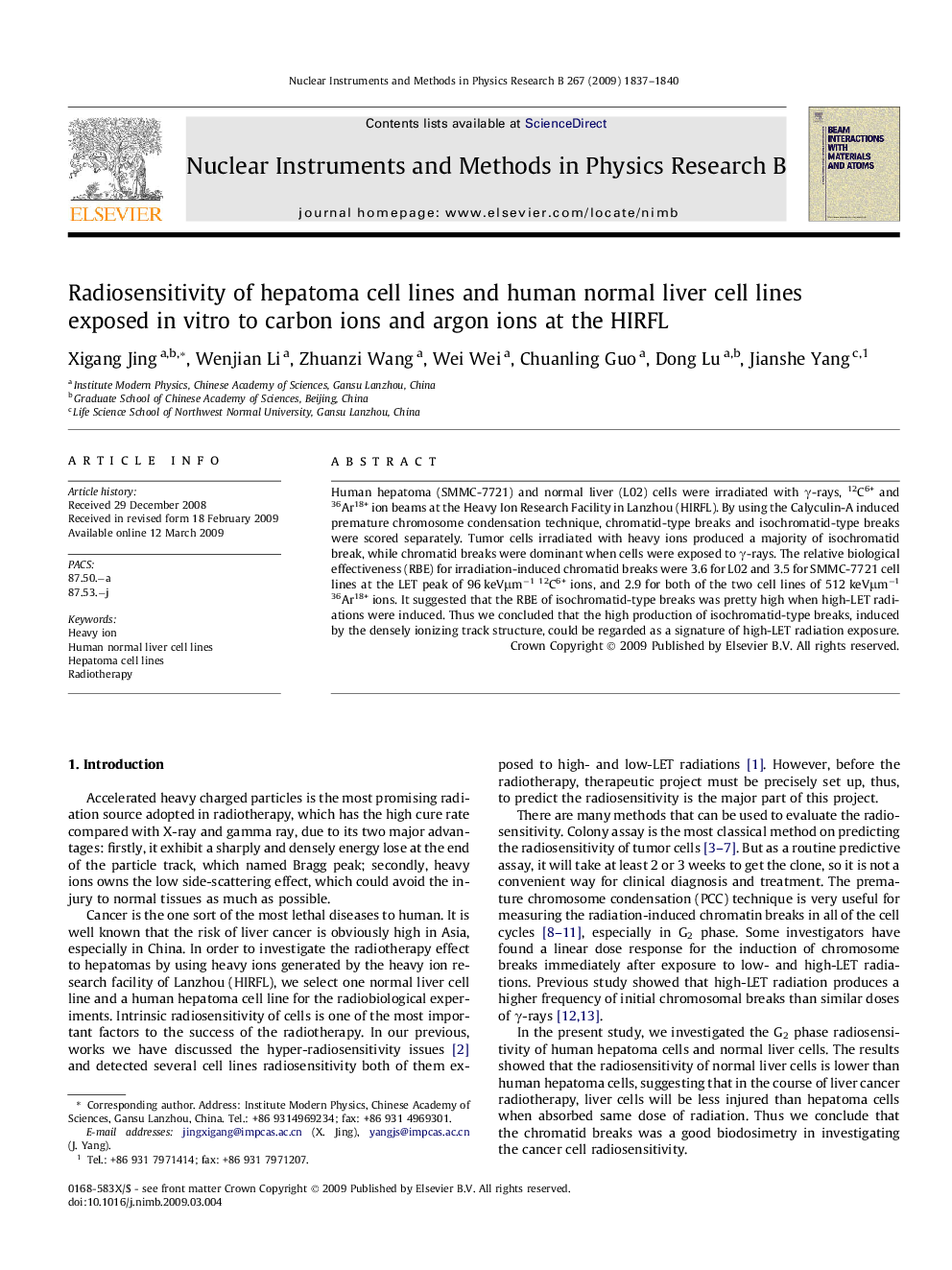| Article ID | Journal | Published Year | Pages | File Type |
|---|---|---|---|---|
| 1685258 | Nuclear Instruments and Methods in Physics Research Section B: Beam Interactions with Materials and Atoms | 2009 | 4 Pages |
Human hepatoma (SMMC-7721) and normal liver (L02) cells were irradiated with γ-rays, 12C6+ and 36Ar18+ ion beams at the Heavy Ion Research Facility in Lanzhou (HIRFL). By using the Calyculin-A induced premature chromosome condensation technique, chromatid-type breaks and isochromatid-type breaks were scored separately. Tumor cells irradiated with heavy ions produced a majority of isochromatid break, while chromatid breaks were dominant when cells were exposed to γ-rays. The relative biological effectiveness (RBE) for irradiation-induced chromatid breaks were 3.6 for L02 and 3.5 for SMMC-7721 cell lines at the LET peak of 96 keVμm−112C6+ ions, and 2.9 for both of the two cell lines of 512 keVμm−136Ar18+ ions. It suggested that the RBE of isochromatid-type breaks was pretty high when high-LET radiations were induced. Thus we concluded that the high production of isochromatid-type breaks, induced by the densely ionizing track structure, could be regarded as a signature of high-LET radiation exposure.
